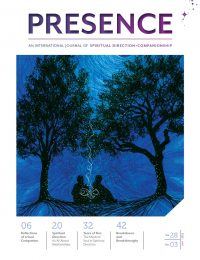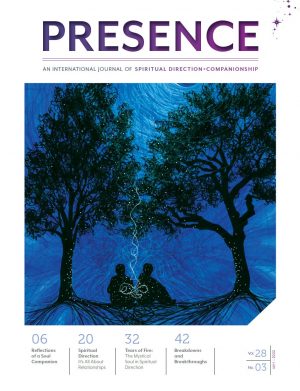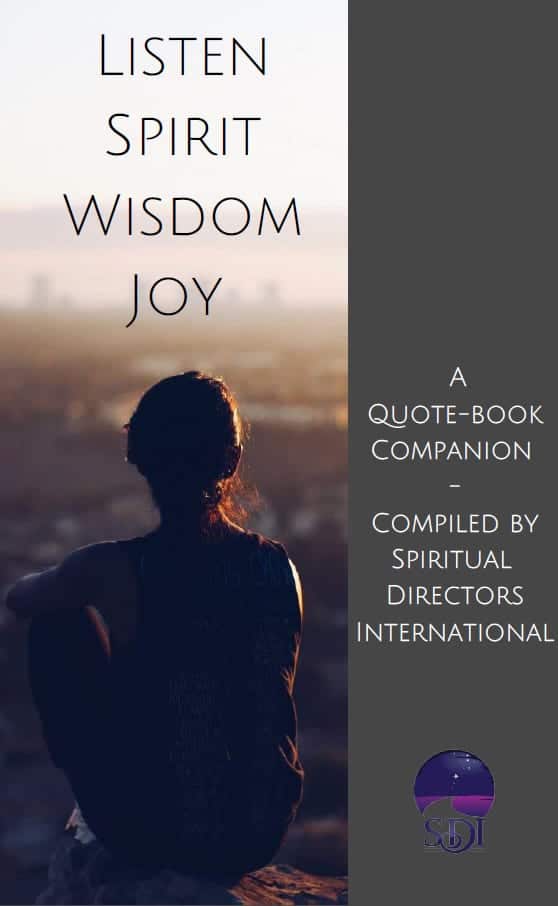Beverly Lanzetta - "Tears of Fire"
It’s so nice to be here with all of you and to have an opening of prayer and joy and reflection on today’s world and our conditions of suffering that our two early speakers just addressed. Let me begin with a short prayer.
May the dawning light of mystery enter our beings, liven our bodies, and heal our wounds. May eternal wisdom teach us compassion and help the tender souls of our world. May all the wonders of nature—sparrow, deer, juniper, the greening hills, the rushing streams—join our prayers. Let us draw these earth energies into our hearts. Let us breathe in and out the universal. Let us open our hearts this day to the glory of life, the beauty of creation, and with joy and humility celebrate this day.
Like many of you, I’ve been involved in the dialogue of souls for most of my adult life, although in the early days I had no knowledge of what we now call spiritual direction or its history. Of course, even without formal training people always have communicated with each other about the spirit world, their place in the universe, longing to know the eternal, and our path to liberation.
My talk today is titled, “Tears of Fire: The Mystical Soul in Spiritual Direction.” In my years of working, I recognized that spiritual companionship ushers in a sacred conversation in which we are granted insight into the interiority of another person, and the mysterious way the Divine calls each of us to love. I have seen so many people whose souls are suffering. And while we know that the spiritual journey leads us to freedom, unity, wholeness, and joy, it also teaches us about the depth of suffering, which we encounter every day that wounds our hearts.
Spiritual companioning is not something that one does, but something to which we are led. It is the erasure of roles and hierarchies. It is a practice that cannot be truly studied, but only lived out in contemplation and surrender. It’s humbling to sit with another person and listen to the sacred movement in their lives.
Historically, guidance and sharing of the inner life was concerned primarily with the highest states of human possibility within a particular religious context, the journey toward enlightenment, nirvana, or unio mystica. Today, spiritual direction, in the broadening of its ministry beyond religious and monastic contexts, includes all faiths and diverse nonreligious orientations. These are inspiring developments as we witness the expansion of this ancient practice across traditions and secular settings.
At the same time, we don’t want to lose the radical heart of the relationship, that rare encounter of trust in which deeper soul issues, wounds of the spirit and mystical states of consciousness are addressed. I feel that the mystical within us, or what I sometimes call the “monk within,” might be one of the most undeveloped dimensions of our lives, particularly in public discourse. It is thus all the more important in the spiritual companioning relationship.
While modern society tends to privilege a materialistic, secular, or even a religious lens, true spiritual direction bends our focus toward God, Mystery, re-orienting us to a life lived in service of the holy. We discover entirely new categories by which to measure our inner lives: we learn about prayer and meditation. We learn about solitude. We learn about silence and desolation and spiritual aridity in those moments when we’re quiet and we’re opening our hearts to another person.
I’ve learned the beauty of the mystical depth within each person, how we intuitively know and experience whatever is out of harmony with the entire tapestry of creation, how we suffer not only personal errors, but also collective pain, and ecological dislocation. In the cave of our solitude, we’re attuned to the mercy that binds us. We yearn to alleviate injustice. We long for a world of compassion, for love to flourish, for peace to come, and we shed tears of fire, grieving the betrayals of all that is precious and pure.
It is in this depth of unspoken experience that our soul’s labor to unite and to heal. It is so touching how, in our depth, even when we do not know what we are doing, we are mystical activists, mending what is torn, piecing together the fragments of a future peace.
Like many committed seekers before us who fled to the desert or mountain caves, we too feel the tension of a world struggling for meaning. We too feel an anguish of heart over the cruelty and injustices that harm all life. I’m reminded of our spiritual forebearers who realized that the monastic cell or the forest cave was much more than a physical location. It’s actually a portal that ushers in the intensification of Presence, those quickening moments when the aspirant is drawn into bearing the Divine Light. Likewise, it uncovers in oneself the façades of personality that prevent us from opening our hearts to each other and to the Holy. In silence and solitude, the Divine Light is condensing us and helping us to release our inner pain and to find a new integration.
These last years of worldwide tragedy have called us into the cave of the heart, where in our solitude and often loneliness, a light is intensifying revealing our hidden wounds. Many of us have entered a new dark night or an inner death in which we engage with the state of the world and with our personal and transpersonal liberations. In which we acknowledge the sacred sharing that we suffer, for all that we have not done, for all that we could yet do, for all the ways that the world (you and I) has traded this eternal irreplaceable path for something irrelevant, for straw, for prestige or honor or fame.
My talk today will explore what I’ve learned about the mystical soul, its capacity to bear suffering, and also a little bit about the dark night of the feminine, which I define as a deep state of transformation in which we discover a new type of integration with and respect for the gentle, tender, benevolent, and merciful.
Of course, every person has a mystical soul. Every person’s deep interiority is one with their source.
The Mystical Soul
Every person has a mystical soul that seeks the light. And so, as I said earlier, this mystical wellspring within us is always trying to mend what is pained. We are always trying to heal what is harmed. The mystic within us experiences the interdependence of all realms and takes part in the spirit’s activity to unify and heal what is divided, fragmented, or harmful.
Those people who are drawn into these deeper dimensions of the inner life tend to have a mystical personality, a more pliable or permeable personality such that the veils between divinity and humanity are thinned. These are those thin places between our daily life and the sacred, as we move back and forth between realities knowing that we are connected in some deep way with mystery.
The sensitive soul attuned to mystery often exceeds the limits of the individual self. Our feelings are not always personal. They’re more than personal. They could be our neighbors, our mothers, our children, our earth. Therefore, souls tuned to the subtle vibrations in life have a tendency to want to absorb other people’s emotions and psychic scars. In my practice, I began to focus a lens on soul wounds, these interior injuries to a person’s dignity and worth, and to seek to understand the process by which healing occurs, because we’ve all heard stories of sexual abuse, betrayal by spouses and families, shunning or rejection by partners, religious communities, or friends.
I often use an image drawn from a variety of mystical texts, in which the soul is described as supernatural, having a higher, or more interior, and lower, or more external level of consciousness aspect. The lower is engaged with the world and is susceptible to its energies, both positive and negative. The higher soul turns inward, and is always one with its Source, untouched and pure. According to this depiction, no matter how we have been injured, the higher soul is always turned inward toward God, always untouched in its essence.
When we suffer too many inner wounds or violations, we don’t experience that the door between the lower and higher soul is always ajar, never fully shut. I’ve found the depiction of higher and lower consciousness very useful, because it helps to visualize how the deep self can be injured but, at the same time, healing, forgiveness, and love also abide within the deep self.
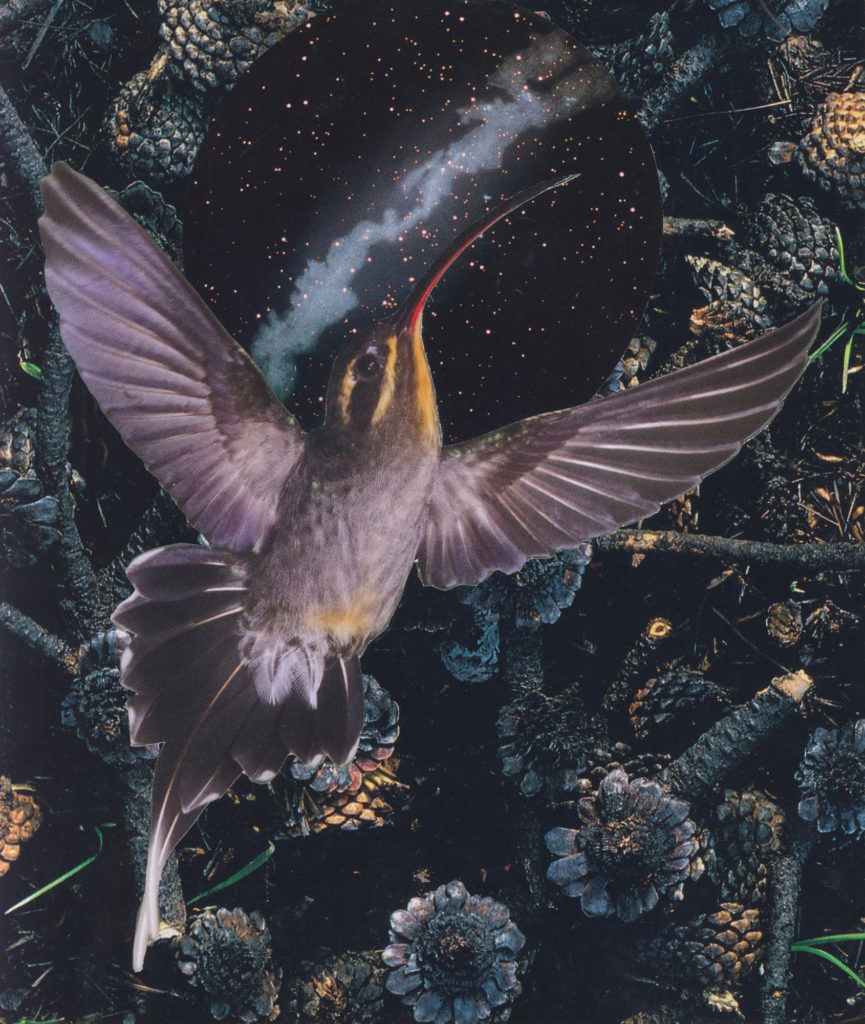
"Ashes to Stars"
— MaryHope Lee
Suffering and the Mystical Personality
The title of my talk, “Tears of Fire,” is a quote from the fourteenth century Italian Saint Catherine of Siena, “If you open your mind’s eye, you will see that the Holy Spirit weeps tears of fire in every one of my servants who offers me the fragrance of holy desire.”
The weeping of fire—what a way to say it, and something only someone who has “been there” could imagine—has no tears because it’s the blaze of the spirit in us, drawing us to have passionate desire, to unite the divisions of the world. Paraphrasing her thought, even though we cannot heal every situation in the world, even though we cannot rectify all the wounds and sufferings, our passionate desire to want change brings blessedness to each other and to God.
This is the wound of love that flows through us and in us and experiences the joy and the sweetness of the world, and also its unspeakable anguish. Even though we experience these feelings in a personal way, at the same time, our souls are not just bearing personal suffering. They’re also bearing generational, societal, earthly, and divine suffering. We are not just talking about our own sins and offenses. We’re also understanding and experiencing the pain of the Earth, the pain of war, the violation of other’s dignity and worth. And we cannot help but feel in our depth.
Particularly in these times of many world issues—the pandemic, wars, environmental degradation, fires—when I listen to spiritual companions I hear them say, “I want to grow deeper. I want to be closer to God. I want to find out how I can help. I don’t understand what I’m feeling.” Some people say, “I feel like I’m going crazy. I don’t know that I can feel at this depth, is it really possible?”
Part of our job as friends in spirit is to hold each other’s hands, to hold our brokenhearted-ness and to affirm that, yes, we do feel at this depth. We do feel the Earth weeping tears of fire. We do feel our children weeping tears of fire. And in these moments of soul to soul, sitting with our companions, we set aside all the reasons and the regrets and the blame and the sorrow. And we just weep. We just let the tears come.
This intensity of soul sharing impacts on us as spiritual guides as well, touching uncomfortable or even violated aspects in ourselves. Thus, it is vital to not only be compassionate with our companions, but also with ourselves. And to be aware of any tendencies we may have to dismiss, ignore, or deny the intensity of longing of the person who seeks spiritual health, because it triggers or affects own journey to experience at that depth.
Our friend, St. Teresa of Avila, concurs: “During the twenty years that I could not find a confessor who understood me, even though I looked for one, that I often turned back and was even completely lost, for someone who could understand my spiritual changes and the deep contemplative transformation that I was undergoing would have helped me to flee from the occasions of deep doubt, pain and suffering and the feeling of being totally lost.”
These deep feelings and mystical insights are graces of vision that we need to recognize and share. How many times have you, as I have, been in a restaurant with a friend talking about the inner life? Sharing our feelings of inscrutability and unknowing and questioning how to alleviate a block or impasse in our spiritual lives.
Dark Night of the Feminine and the Wound of Love
A consistent theme in the spiritual life is the passage through stages of darkness and doubt, confusion and impasse, and loss of faith—Great Death, Dark Night, Fana, etc. Often, and over these many decades of spiritual service, I’ve noticed many of my spiritual companions were confronting issues not addressed by these classical categories. I was led to refine my thought and described a more intense and radical stage of inner growth, which I called the “dark night of the feminine.”
I became especially aware of women’s struggles in spiritual direction and their unique journeys in the context of church politics, religious marginalization, the grief and anger born of generational and personal violence. I also began to see many men who were struggling with a social rejection of their own feminine interiority. In the midst of this, while also reading feminist, mujerista and womanist theologians, as well as the work of eco-theologians and Black theology, I realized that these contemporary thinkers were touching on a domain of the inner life not explicitly addressed in the spiritual direction relationship, at least up to that point, as far as I knew.
I questioned: how are we guiding souls to handle the oppression of racism, sexism, gender identity, social marginalization, and so forth? It is difficult for me to speak about this deep and sensitive aspect of the soul and to find language to share with all of you. But I want to say that there’s a tremendous spiritual impact exerted on our inner lives and well-being by a flawed anthropology that believes or wants to promote the idea that some people are better than others. That there’s a hierarchy of value, and of dignity. Often, this interior suffering is not only denied or ridiculed as unimportant or emotional it also leads to muteness and anguish and a trivialization of one’s own experience.
The dark night of the feminine is a passive action of healing in our depth. It’s a radical, mystical process by which the soul is condensed. And using that image I talked about earlier, we’re in the cave, the light is condensing us, right? The soul is condensed by the light of the divine feminine to create an opening, an empty space, a surrender in order to free us from subtle forms of injustice, sexism, racism, homophobia, gender identity, et cetera, that is embedded or imprinted in our religious and social contracts, as well as in the very categories and processes that we use in the spiritual life.
This was one of the most radical realizations—that even the language of the spiritual journey, and the categories we use, often subtly or overtly perpetuate injustice. We’re taught to assume that the spiritual journey and its passages are universal, but often fail to recognize the cultural, historical, gender, racial, sexual, et cetera, biases that inform them.
I think of the dark night of the feminine as a more intense phase of transformation that heals injustice. It’s an attempt to integrate and unite the spirit with the body. It’s leading us to an embodied spiritual life, honoring the sanctity of everything. The universal path alone is not enough anymore. At least to me, to say that we are all going to a universal place without coming back into our embodied pain and the ways in which we have harmed each other, or denied each other full dignity and equality, welcoming all into the circle of belonging and of love. This is the inner journey of our time, and such a profound level of injustice that people want to heal.
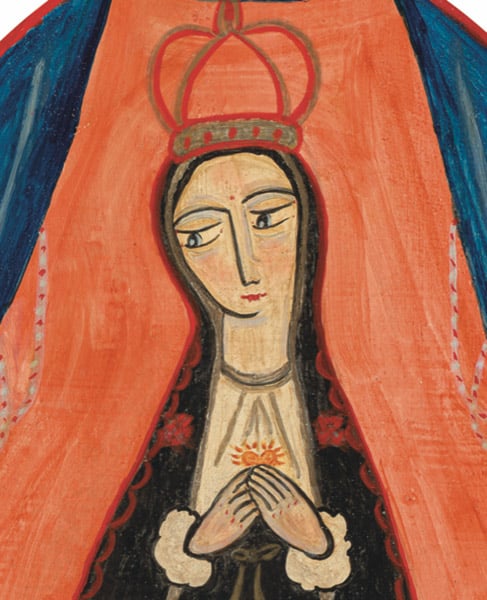
"Our Lady of Solitude"
— Beverly Lanzetta
© 2021. Fragment.
Reproduction or Reprint by permission of artist only.
Many people have felt uncomfortable in their religious tradition of birth—because their religion is exclusive. It holds onto superiority. It’s racist, it’s rejective, it’s too patriarchal. What are these people saying? They’re saying that their inner life, their mystical center wants to heal these injustices. That we want to find that unity in ourselves so that we can heal the divisions in the world. And in order to do that, we have to put a magnifying lens in its own gentle way, in the way of love and compassion and begin to uproot languages, words, thoughts, and processes that are not fully loving, not fully benevolent, not fully merciful.
When I say it’s a feminine night, I mean the soul experiences the afflictions of its most tender and receptive nature, the most intimate, both in terms of the negative or painful wounding of the world. And also, the positive inflow of divine love, of the eternal wisdom of the feminine, which opens us to deeper reserves of communion and oneness. It’s the soul’s passive, mystical activism taking place in our depth, which is very beautiful because each of us in our daily lives can and is participating in uniting our divisions.
Now, this process of recognizing, paying attention to, calling out, naming where there is still injustice or suffering in the inner life is not only personal, but collective. It is allowing the feelings and the tears of fire, allowing weeping because we’re being drawn gradually to embody the states of compassion, mercy, benevolence. We are in a gestational process initiating the birth of a new consciousness. As the mystical force of the divine feminine heals our wounds, we understand that not everything can be answered, that there is unknowing and unsaying in life that transforms injury into communion and blessedness.
As spiritual guides, we need to be very aware of the impact of socially sanctioned and religiously sanctioned oppressions that affect our personhood, our souls and our societies, and how we live out these painful states of consciousness often without recognizing their impact. The naming of this category, the dark night of the feminine, is only a concept. It’s words, but sometimes words are really necessary. Sometimes language helps put our lives in context. Helps us to recognize in the history of spirituality that a new door is opening that gives us access to a new dimension of inner growth. To embrace Catherine of Siena’s passionate desire to give our souls over to surrender, to desire to be one with not only God and the sacred, but also with all of life. And to hold in our hearts the tears we feel, the weeping of fire for all that we wish we could be and maybe are not yet.
The soul that enters the dark night of the feminine experiences the pain inflicted on the gentle ones and is pierced by the light of mercy with an invitation to be different and to act differently. In this inner stage of mystical transformation, feelings are intensely felt in a way that we haven’t felt before. And many of my spiritual companions speak about an inner feeling that is more intense than any bodily pain they’ve ever had—”I feel like I’m going crazy. Nothing I understand or read is helping me because I can’t reconcile what I’m doing every day with these feelings going on in my depth.”
I will end with just a few thoughts. The power of the night of the divine feminine heals the sin of otherness, the exclusion, violence, and rejection of difference in our hearts. It purifies spiritual and religious egoism in which one’s truth path, scripture, religion is secretly or overtly believed to be greater, more holy, more true than any other. And when we pass through this otherness, this rejection of the other, we also then pass into the acceptance of our whole selves and we begin to have compassion for ourselves. And we begin to have compassion for all beings, for the Earth.
We seek here in this movement into the deeper life, uniting the sacred with our daily existence, bearing injustice, division, and pain in order to bring about unity and reconciliation to ignite the flame of love every day.
In a way the dark night of the feminine is a tender night, even though it can be fiery and painful, because it puts us in touch with what we long to be and hope to have happen every day. When I pray, I ask God, please make me empty. Please open and expand my soul to hold the intensification of your Presence, to hold the passion for life, to be different, to be healing, to be joy.
During these times of affliction, and during these times of joy, and during these times of this wonderful gathering of being together, I hear the spirit whispering peace, peace, peace. The peace of a pure heart, of an intention to nonharm, to the flourishing of life and for a love of the Earth, a peace that suffers with the least of us, shedding tears of fire for the majesty of creation.
A peace that knows no bounds and recognizes no authority over mercy. A peace of forgiveness, for the ways in which we violate the law of love. A peace that is the power of transformation, a divine peace that folds us in the arms of eternal compassion. Peace, the waters of bliss washing through our souls, cleansing humanity of its sad history.
Let us weep our tears of fire and celebrate our longing to see a world transformed. The Unconditional advances into our hearts when we are laid bare, when we don’t know where else to turn, when we’ve traded in our membership in the social club for the pain of not belonging and find the courage to say, Sí. Let me be. Let it all in. Show me what Is.
Thank you. Amen.
This Article Appears In
AN INTERNATIONAL JOURNAL OF SPIRITUAL DIRECTION + COMPANIONSHIP
Vol. 28 | No. 3 | SEPTEMBER – 2022
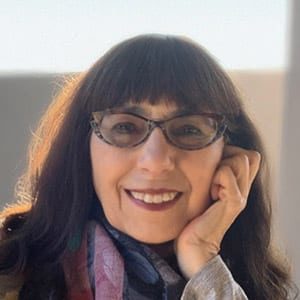
Author
Beverly Lanzetta
is a theologian, contemplative scholar and teacher, and the author of many groundbreaking books on emerging global spirituality and new monasticism, including A New Silence: Spiritual Practices and Formation for the Monk Within, The Monk Within: Embracing a Sacred Way of Life, Radical Wisdom: A Feminist Mystical Theology, y Foundations in Spiritual Direction.

Artist
MaryHope W Lee
is an interdisciplinary artist whose goal is to create art that feeds the spirit. Her work has been exhibited online and in brick and mortar galleries and published in small press literary journals. Originally from San Diego, California, she lives in Phoenix, Arizona.

